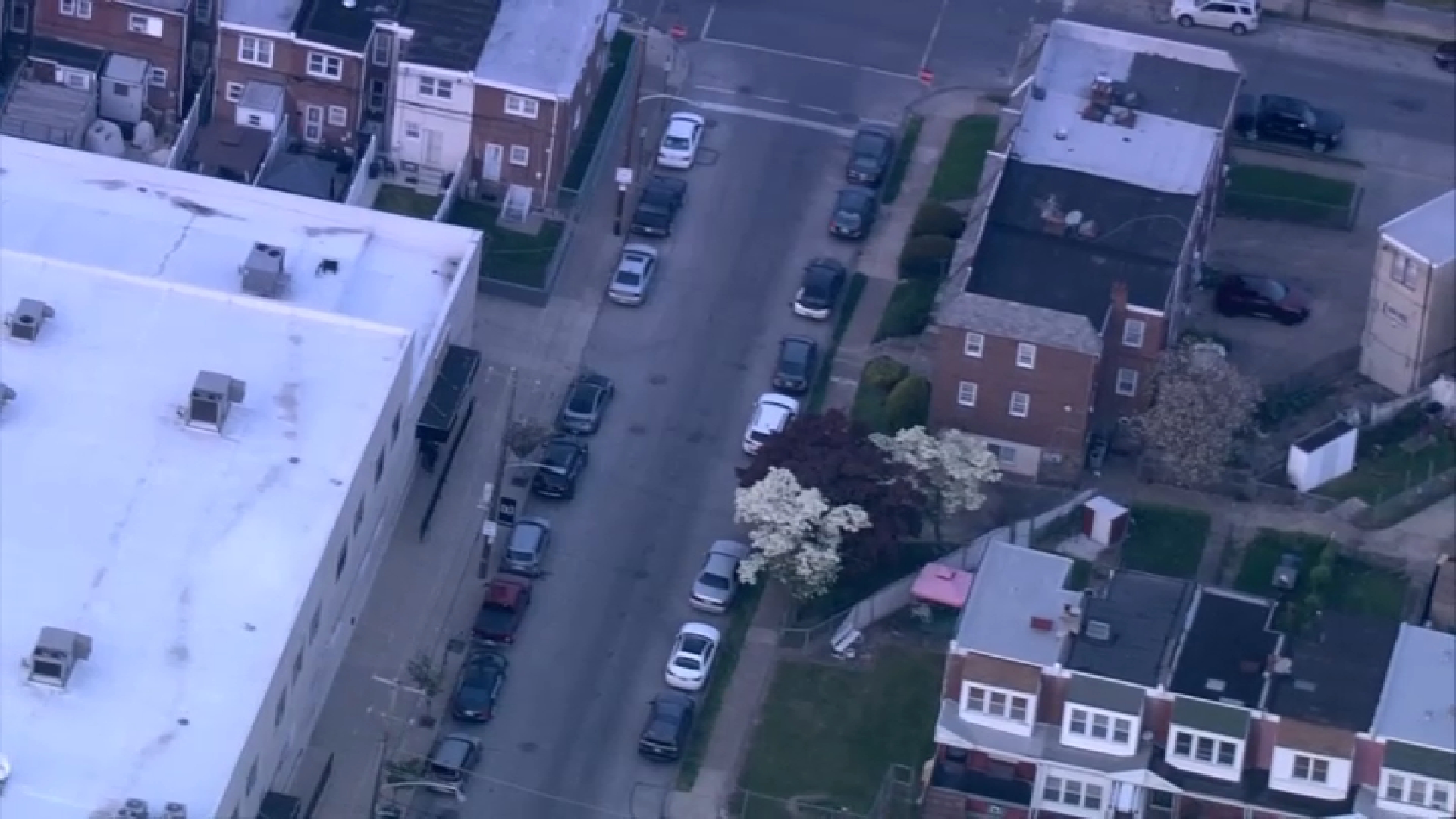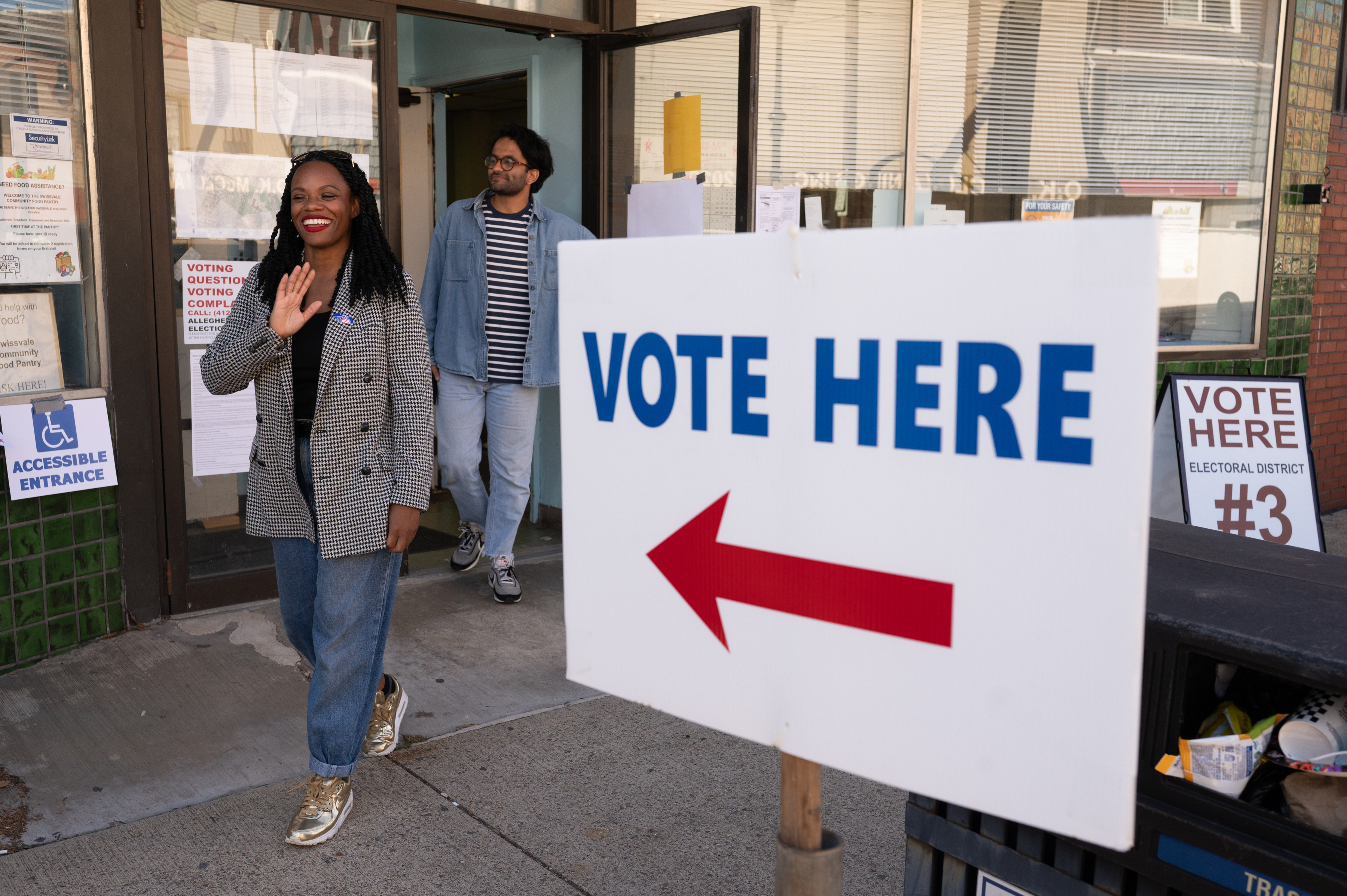Recent legal cases in Philadelphia have brought attention to the crime of "human trafficking."
A Philadelphia man forced a 15-year-old girl to have sex for money, threatening to kill her if she told anyone or ran away. Brothers smuggled young Ukrainians into the country and forced them to work as cleaners in Philadelphia area stores.
Both were real local examples of human trafficking. One was domestic and part of the sex trade, an aspect of trafficking that received a surge of publicity during the Super Bowl this year in the New York metropolitan area.
The case of the Ukrainian slaves involved the other, less talked about aspect: international trafficking for labor purposes.
While awareness is rising that victims of trafficking are sprinkled around the Untied States, advocates for victims say there's still much work to be done.
'Modern-Day Slavery'
Hugh Organ is associate executive director for Covenant House Pennsylvania, the largest nonprofit shelter for runaway, homeless and trafficked youth in the Philadelphia area.
Local
Breaking news and the stories that matter to your neighborhood.
"Human trafficking is modern-day slavery," he says. But he doesn't think people are aware the Philadelphia area has a large trafficking problem -- even though it's going on right in front of them.
"You can have a labor-trafficking victim inside of restaurants, someone who cleans your office building," he said. "You could have a janitor who's a human-trafficking victim, a nanny -- we've worked with nannies who were human-trafficking victims, who are being forced to work 10 and 12 hours a day, being beaten when they complained."
It's difficult to pinpoint the size of the trafficking problem, he says, but the Philadelphia area's volume of tips indicates there is a significant amount of the crime. He advises people to do what they can to help — by calling the national human trafficking hotline (1-888-373-7888) if they think they see a victim, so law enforcement can investigate.
"We have both domestic and international trafficking going on here in Philadelphia," Organ said. "Domestic trafficking and international trafficking look different at times. Domestic trafficking is a little more out in your face kind of things -- like the girls on the avenue under pimp-controlled prostitution."
Purple Instead of Blue
Women such as Ann Marie Jones.
Jones entered the world of trafficking when she was in her early 30s in 2003. She soon started using crack.
"I wound up in the streets of Kensington Avenue for the next 13 years." Jones said. "I was prostitutin'. I met a man, he told me he was from New York, and he had told me that he was a pimp from New York."
Jones fell in love with the man who became her pimp. She says that's when her life turned into a nightmare: He beat her -- putting her in the hospital for weeks with broken ribs and black eyes.
Each time the pimp made promises to lure her back. It wasn't the money or even the drugs that kept her working the streets. She kept doing it, she said, because she craved his love. Sitting in the courtyard under Philadelphia City Hall telling her story, Jones was brought to tears at the memories:
"Bein' involved with a pimp -- they are so controlling and manipulative, and they can have you believin' that the sky is purple instead of blue."
Jones says a pimp has the power to change the way a person thinks, as happened in her situation.
"My whole life, I was just lookin' for someone that wanted to love me. He played a good game the way he manipulated me into believin' that he loved me."
Beyond the 'Black Hole'
Her escape from that life only came after she was arrested, again, for prostitution. She got help from a court specifically designed to help women who are working as prostitutes, and a woman from the Defender Association of Philadelphia.
"Mary DeFusco came to me and she said to me, 'You know Ann Marie, you're in Dawn's Court, it's up to you what you want to do with this. We're here to help you but we can't make you want this. And my probation officer, her name was Miss Palmer, she said to me, 'What is it that you don't see in yourself, that everybody else sees in you?'"
Jones starts to cry when she remembers her probation officer's kind words. She says she didn't know what anyone else saw in her that was of any value. But she decided that, to survive, she had to get out of the destructive world of prostitution.
She got down on her knees in her jail cell.
"My celly, she was on the top bunk, and she was like, 'What are you doing?' And I said, 'I'm going to change my life today.' And I haven't looked back since."
Jones grew up in Philly and has a difficult family story full of abuse. She says she's been raped multiple times, beaten badly, and never expected to make it out alive. She has pulled herself away from her dark past and has now been clean for almost four years.
"That's a dream in itself. I never thought I would get my life together. I thought I would die out there. I really did. I was lost."
Jones continues to build a life: She has a job, a 26-year-old daughter and twin daughters. Remembering the past offers a warning of the darkness that once surrounded her.
"I used to carry a composition book around with me and I started writing about my life. I called it 'The Black Hole.' And I felt like I was literally in a black hole, and I was in the bottom of this hole. And every time I tried to reach the top, I could see the light -- and every time I tried to reach the top, I would slip down further and I couldn't get out."
With help from Dawn's Court and the Defender Association of Philadelphia, she is now on the right track and far away from the world of human trafficking.
The Many Faces of Trafficking
While human trafficking has many forms -- international, domestic, sex, labor -- it can simply be defined as labor or commercial sex induced by force, fraud or coercion or if the victim is under 18. Under U.S. law, it includes children involved in the sex trade and those 18 or older who are coerced or deceived into commercial sex acts.
It includes the sex trafficking of U.S. women as well as labor-trafficking situations where people are, often, brought to work in U.S. nail salons, massage parlors, restaurants, and as farm workers and nannies from other countries, especially Southeast Asia.
Teaching Doctors to Recognize Warning Signs
Dr. Kanani Titchen, a resident physician with Thomas Jefferson University Hospitals, started researching child sex trafficking on her own a few years ago. She says she realized that most physicians in the U.S. believe trafficking is something that happens overseas and does not affect U.S. youth. Her research indicated otherwise, so she created an online training tool to help doctors and other medical professionals recognize the signs of child trafficking.
"Bruising especially on the head, injuries on the head, dental injuries, injuries that tend to be less obvious and do not 'taint the product' that these pimps and traffickers are trying to put out there."
Titchen says the marks on a child trafficking victim aren't typical elbow and knee injuries. Instead she says, they're often on the head or the back, as well as dental and vaginal injuries.
Titchen says children from 12 to 14 are the most vulnerable to being pulled into the world of child trafficking because they are insecure about their bodies and are seeking approval and security. If they don't get that at home, she says, they'll look for it elsewhere.
"I think that many people are skeptical that it's happening here in the U.S. I know when I started this project to educate physicians … a year ago, many of the physicians that I approached and many of the physicians to whom I sent my survey, responded saying, 'But this is not a problem here. You're talking about international child trafficking."
Titchen says the physician training materials will be available on the American Medical Women's Association website that will offer information on identifiers and risks for trafficking, screening techniques and resources for physicians to use if they do have a patient who has been trafficked.
"Doctors are in a specific and unique position to help patients. We see patients all the time privately in clinics, in emergency departments, in our cubicles," she said. "We have the privilege of seeing the patients' entire body and really picking up on the physical cues that may present themselves."
Titchen says physicians have a particular opportunity to help because of the trusting rapport they build with patients. Through her work in Philadelphia, Titchen has encountered one patient who was trafficked and several others she believes may also be victims.
A Crime with No Geographic Limits
Human trafficking exists far beyond the city's boundaries.
Jordan Kirlin is the director of Freedom and Restoration for Everyone Enslaved, or FREE, a volunteer group based in Berks County.
"We actually had a case very close to us," he said.
It's not just people with special training who can help. Kirlin said when in doubt, it's worth taking the time to call in a tip, because one person's observations can be critical, as in a case in York County a few years ago.
"It was a nail salon in a Wal-Mart," Kirlin recalled. "A lady that was getting her nails done was suspicious because she was always able to have conversations with the women that were doing her nails except when there was an older lady within the room. So she called it in as a tip. It turned out these women were being trafficked."
Kirlin said one-third of trafficking victims who are rescued are saved because an everyday person called in a tip. He said his organization is working to put together a translator team to improve communication with people who might be human trafficking victims.
The National Human Trafficking Resource Center is a 24/7 hotline. It is operated by Polaris, a nonprofit, nongovernmental organization working exclusively on the issue of human trafficking. To report a possible human trafficking victim call: 1-888-373-7888 or text BeFree (233733).
This story is reported through a newsgathering partnership between NBC10.com and NewsWorks.org.



